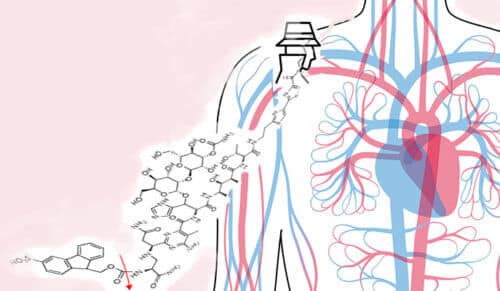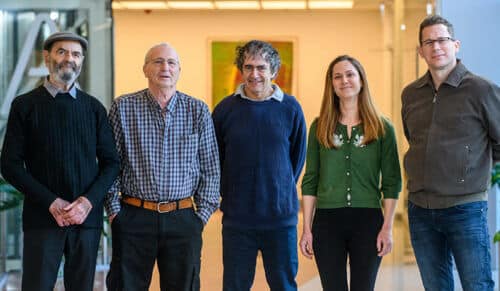To maintain the effective concentration of chemotherapy drugs in the blood - without risking serious side effects

Secret ink that makes it possible to send a sensitive letter to a distant recipient - without the contents of the letter being revealed prematurely, ignited the imagination of writers (and intelligence services). The scientists of the Weizmann Institute of Science have developed a "hidden drug" - a method that makes it possible to assemble a drug in a "dormant" state, which gradually comes into action in the body itself following spontaneous chemical processes. This method makes it possible to maintain an effective concentration of the drug in the blood circulation for a long time, without crossing a dangerous threshold that leads to serious side effects. This method is particularly suitable for chemotherapy drugs - which are actually poisons designed to destroy cancer cells, but may also cause severe side effects in excessively high doses. The findings, recently published in the journal Toxicology and Applied Pharmacology, were demonstrated in the chemotherapy drug "Bleomycin". This drug has various side effects, the most serious of which is pulmonary fibrosis where the healthy lung tissue is replaced by scar tissue to the point of needing a lung transplant.
A "dormant" drug, which upon entering the body sheds its "pyjamas" and becomes an active drug, is called a "prodrug". The idea to create prodrugs was born already at the end of the 19th century, but the search for a winning recipe for assembling prodrugs continues even today. In the early 2000s, Prof. Yoram Shechter from the Department of Biomolecular Sciences and Prof. Matthieu Friedkin from the Department of Organic Chemistry developed a new method for assembling prodrugs: attaching a molecular "stopper" (the FMS molecule) to drugs that have an amine group. When the "clogged" medicinal substance is introduced into the bloodstream, the molecular "cloggers" are released following spontaneous decomposition processes, and the drug is gradually released in its original and active form.
"In recent years, we have come to the conclusion that the technology we developed is particularly suitable for chemotherapy drugs given by injection - because of the great difficulty in maintaining an effective concentration of these drugs in the bloodstream over time; This difficulty requires, on the one hand, frequent administration of injections - and on the other hand, it may cause severe side effects when the concentration of the drug in the blood is too high," say Prof. Schechter and Prof. Friedkin. In the current study, the researchers, in collaboration with Prof. Michael Walker from the Department of Biomolecular Sciences and Dana Etrakchi and Dr. Itzik Cooper from the Yosef Segol Neuroscience Center at the Sheba Medical Center (Tel Hashomer), demonstrated their technology with the chemotherapy drug Leomycin, which is used in a variety of Types of cancer, including Hodgkin's lymphoma, ovarian cancer and cervical cancer.

In collaboration with Prof. Amnon Horowitz from the Department of Structural Biology at the Institute, the researchers developed a mathematical model that allows simulating the pharmacokinetic profile of prodrugs (their absorption, distribution, metabolism, elimination and toxicity). The model is based on four variables: the concentration of the prodrug in the blood immediately after taking it, the half-life of the prodrug (the period of time that elapses until the concentration of the drug in the blood is reduced by half), the rate of its activation (that is, its transformation from a dormant drug to an active drug) and the half-life of the active drug. Later, when the researchers gave the prodrug of bleomycin to mice - they discovered that the pharmacokinetic profile they drew using the model matched the experimental findings. The researchers hope that in the future the model will enable optimal planning of the administration of prodrugs in concentrations suitable for the patient.
Although there are currently prodrugs on the market, the methods for their assembly are based on enzymatic release of the active substance: the dormant drug becomes active at once when it comes into contact with an enzyme in the body. The spontaneous chemical decomposition in the method of Prof. Shechter and Prof. Friedkin allows for a gradual and controlled release of the drug while maintaining an effective concentration - without crossing a dangerous level or falling below the level of effectiveness of the drug. Alternatively, there are methods that allow controlled release by "packaging" the active substance in liposomes that have a slow rate of dissolution in the body. These methods make it possible to extend the active time of the drug, but the released substance does not maintain optimal pharmacokinetic properties, as with current technology. In follow-up studies, the scientists will try to demonstrate the method with additional chemotherapy drugs.
The tennis club
Schechter and Friedkin, now professors emeritus, have been collaborating for 22 years. "Matti and I both left Prof. Avraham Pachornik's lab. He is the chemist and I am the biologist. Biologists, in general, do not speak the language of chemists - and vice versa. But, in our opinion, communication between chemists and biologists is extremely necessary to reach scientific achievements", says Prof. Schechter. "In old age, we also included Dr. Cooper from Sheba, who was a research student of the late Prof. Vivian Teichberg and later a post-doctoral researcher in my laboratory."
The current study involves four professors from the institute, but there is another point that connects the researchers: four of them are avid tennis players - Prof. Schechter, Prof. Horwitz, Prof. Volker and Dr. Cooper. "I am indeed an exception in this landscape - but my grandson recently started playing tennis with great enthusiasm," says Prof. Friedkin, who in his youth played basketball and volleyball.
Science numbers:
In the last 10 years, about 12% of the drugs approved by the FDA are prodrugs - a number that is increasing over the years and with the advancement of technologies in the field.
More of the topic in Hayadan:
